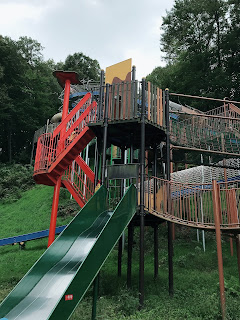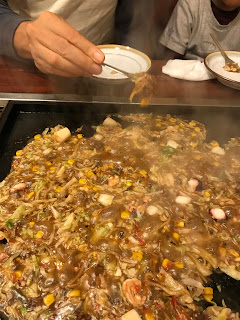Although the word "omiyage" (oh-me-ah-gay) translates to "souvenir," it actually represents so much more than that. It is an obligatory little something to say "I thought of you and thank you for holding down the fort while I was gone."
 |
| Omiyage featuring chestnuts - a seasonal treat. |
There are 4 basic rules a person should follow when buying omiyage:
- It represents the place you traveled to.
- The packaging is attractive.
- It can be shared easily.
- There is plenty to go around.
 |
| Sweet potato "cakes" |
Traditional omiyage is a small edible treat that is individually wrapped. This type of omiyage easily follows all 4 rules. Since the gift should not be something that they have to keep or store for a long time, unless you are giving it to a very good friend or family member, edible is the way to go.
 |
| Rice crackers in fun boxes. |
The treat should represent something the area is known for, like something apple flavored or containing apples from Tohoku since Tohoku apples are really famous. If it doesn't have a local flavor, a seasonal item will also do. Sometimes, it a treat that is commonly associated with the area you visited. Maybe it is made there or is shaped like a famous monument from the area. At Tokyo Tower there are cookies shaped like the tower and in Asakusa there are rice crackers that look like paper lanterns. If you decide to buy the local flavor of Kit Kats, you should get the box of them, not the bag. Even though the inside wrapper is the same, it is all about presentation!
Omiage is so popular here that there are stores entirely dedicated to selling the beautiful boxes. The box is always wrapped in extra paper for aesthetics. Train stations often have several of these shops, but the streets of touristy areas are also filled with them. Although, technically, omiyage should not be an afterthought, there is always a place to buy a last-minute omiyage as you hurry to get on your way home.
 |
| Very fancy rice crackers. |
 |
| Special seaweed used to wrap around rice balls. |
****************************************************
I will be taking a break from writing while I am away. I'll be back at the computer as soon as I return to Japan. Until then... Matane (maw-ta-neigh) or See you later.















































